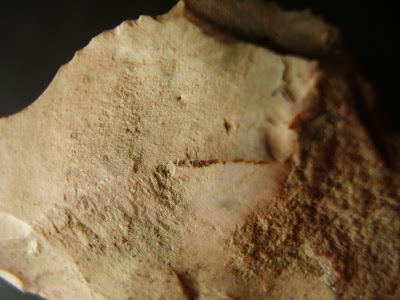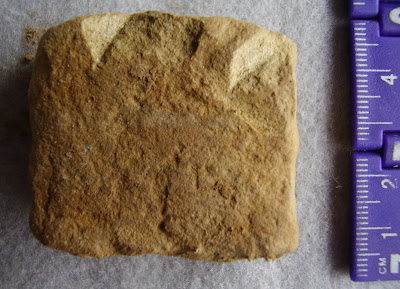Found by Dennis Boggs, Boardman, Oregon
This human head in left profile view figure stone was found by Dennis Boggs, Boardman, Oregon, within 2km of the current Columbia River at Irrigon, OR. It is 8cm x 8cm x3cm size. For nearly 50 years, Dennis has been collecting suspected humanly worked stones from below possible cultural sites very close to the Columbia. It seems most all of the stone material at his sites has been manuported there, so it is an amazing collection of lithic material, almost a "prehistoric rock collection." For geographic context, the "Kennewick Man" skeletal remains were found about 90 km upriver from the find location of this head profile. Dennis shipped this piece to me almost a year ago, along with many others already, and to be, seen on this blog, for me to photograph. It has somehow slipped out of my control and into my general collection of some several thousand suspected crude art and tool pieces. I will be taking time over the winter to search for it. I remember when I saw it in person, the three dimensions of the jaw line and the pinkish lips made it quite impressive. Thanks to Dennis Boggs for this photo and I'll be posting updated photos once I am able to study this manuport or artifact.
-kbj








































